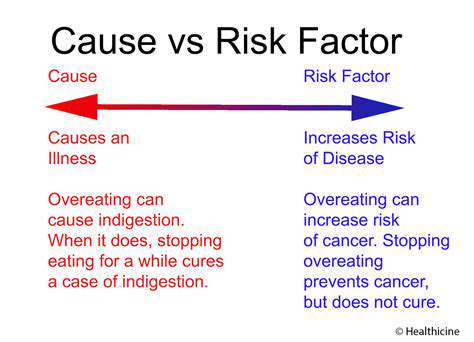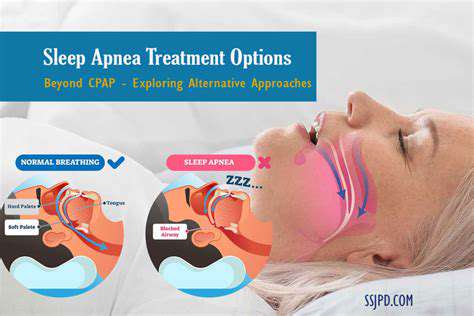Identifying and Managing Sleep Apnea: A Comprehensive Guide
Nov 28, 2024 / zsfcdn103/
What is Sleep Apnea?
Understanding Sleep Apnea
Sleep apnea is a sleep disorder characterized by repeated interruptions in breathing during sleep. These interruptions can last for a few seconds to a minute and can occur multiple times throughout the night. As a result, individuals with sleep apnea often experience fragmented sleep, leading to daytime fatigue and other complications.
There are two primary types of sleep apnea: obstructive sleep apnea (OSA) and central sleep apnea (CSA). OSA is the more common form, caused by the relaxation of throat muscles that obstruct airflow. On the other hand, CSA occurs when the brain fails to send proper signals to the muscles that control breathing.
Many factors can contribute to sleep apnea, including obesity, anatomical features, and age. Recognizing the signs and symptoms can be crucial for seeking appropriate medical intervention and improving the quality of life for those affected.
Symptoms and Risk Factors
Common symptoms of sleep apnea include loud snoring, gasping for air during sleep, excessive daytime sleepiness, and difficulty concentrating. Individuals may also experience irritability and a reduced ability to function in daily activities. Because these symptoms can often be overlooked or attributed to other causes, it's important for individuals to be vigilant and proactive about their sleep health.
Several risk factors can increase the likelihood of developing sleep apnea. These include being overweight, having a family history of sleep apnea, and being male, as men are more likely to develop the condition than women. Other factors include smoking, alcohol use, and certain medical conditions such as high blood pressure and diabetes.
If you or someone you know exhibits symptoms of sleep apnea, it’s essential to consult a healthcare professional. Early diagnosis and treatment can alleviate symptoms and prevent complications such as heart disease, stroke, and diabetes.
Recognizing the Symptoms of Sleep Apnea
Common Symptoms to Look For
Sleep apnea is often characterized by several key symptoms that can significantly impact an individual’s quality of life. One of the most common signs is loud snoring, which may be accompanied by episodes of stopped breathing during sleep. These breaks in breathing often lead to frequent awakenings, preventing the individual from achieving restful sleep.
Other symptoms of sleep apnea can include excessive daytime sleepiness, difficulty concentrating, and irritability. Individuals may also experience morning headaches or a sore throat upon waking, indicating disrupted sleep patterns. It is crucial to pay attention to these symptoms as they can affect not only personal health but also relationships and daily functioning.
When to Seek Medical Advice
If you or someone you know exhibits signs of sleep apnea, it is important to consult a healthcare professional for an evaluation. Early diagnosis and intervention can prevent potential complications associated with untreated sleep apnea, such as cardiovascular issues, high blood pressure, and diabetes. A sleep study may be recommended to assess the severity and nature of the condition.
In addition to physical symptoms, psychological effects like anxiety and depression can also arise from chronic sleep disturbances. Seeking timely medical advice can lead to effective management strategies, including lifestyle changes, CPAP therapy, or other treatments that can improve overall wellbeing and quality of life.
Causes and Risk Factors

Understanding the Causes of Sleep Apnea
Sleep apnea is a common sleep disorder characterized by repeated interruptions in breathing during sleep. The primary cause of this condition often stems from a blockage of the upper airway, a situation known as obstructive sleep apnea. The presence of excess body weight significantly increases the likelihood of experiencing this condition.
Another contributing factor is the structure of an individual's neck and throat. Those with a thicker neck and enlarged tonsils are more prone to having their airway obstructed during sleep. Additionally, alcohol consumption and the use of sedatives can relax the throat muscles, exacerbating the condition.
Genetic factors also play a crucial role in the development of sleep apnea. Individuals with a family history of the disorder are more likely to experience it themselves. Furthermore, certain medical conditions such as hypertension and diabetes can increase the risk of sleep apnea as well.
Overall, understanding the causes behind sleep apnea is essential for effective management and treatment. By addressing these underlying factors, individuals can reduce their risk and mitigate the severity of the disorder.
Identifying Risk Factors for Sleep Apnea
Identifying the risk factors associated with sleep apnea is critical in preventing and managing the condition. Age is a significant factor, as the likelihood of developing sleep apnea increases with age. Older adults are more prone to experience changes in muscle tone and structure, which can lead to airway obstructions.
Obesity is perhaps the most significant risk factor linked to sleep apnea. Excess weight, particularly around the neck, can compress the airway during sleep. This compression can lead to significant breathing disruptions, making weight management an essential component of prevention.
Gender also influences the risk, with men being more likely to suffer from sleep apnea compared to women. However, the risk for women increases post-menopause, indicating hormonal changes may play a role in the development of the disorder.
Other risk factors include smoking, which can increase inflammation in the airway, and certain medical conditions such as heart disease and stroke. Recognizing and addressing these risk factors can lead to early intervention and better overall health outcomes.
Treatment Options for Sleep Apnea

Treatment Types and Approaches
There are various treatment options available for sleep apnea, ranging from lifestyle changes to medical interventions. One common approach is the use of Continuous Positive Airway Pressure (CPAP)
Another critical aspect of treatment involves addressing underlying health issues, such as obesity, which can exacerbate sleep apnea symptoms. Weight loss may significantly improve the condition for some individuals. Additionally, avoiding alcohol and sedatives before bedtime can contribute to better sleep quality. Alternative therapies are also gaining attention, including cognitive behavioral therapy and positional therapy. Cognitive behavioral approaches can help patients change behaviors that contribute to sleep apnea. Positional therapy encourages sleeping on one’s side rather than on the back to reduce apnea episodes. Regular follow-ups with healthcare professionals are essential to monitor treatment progress and make necessary adjustments. Adhering to prescribed treatments increases the likelihood of successful management of sleep apnea. Making certain lifestyle changes can have a profound impact on managing sleep apnea. Engaging in regular physical activity is one of the most effective methods, as it aids in weight management and overall health. Improved sleep hygiene, such as maintaining a consistent sleep schedule, can also enhance quality of sleep. Limiting intake of caffeine and nicotine, especially in the evening, can contribute to a more restful night. These stimulants can disrupt sleep patterns and may worsen symptoms of sleep apnea. Additionally, creating a relaxing bedtime routine can help prepare the body for sleep. Another significant lifestyle adjustment is to eat a balanced diet, particularly one low in processed foods. A healthy diet can support weight loss and improve respiratory health, which is crucial for those suffering from sleep apnea. Staying hydrated can also help maintain overall health and proper body function. It's essential for individuals to be proactive and take ownership of their sleep health. With the right adjustments, many people can improve their sleep quality and manage sleep apnea effectively. Healthcare providers play a pivotal role in diagnosing and treating sleep apnea. It is essential for patients to have open communication with their doctors about sleep patterns, symptoms, and any concerns. Proper diagnosis often starts with a sleep study, which helps determine the severity of the condition. Once diagnosed, healthcare providers can recommend appropriate treatments tailored to the individual's needs. This personalized approach ensures that the treatment plan aligns with the patient's lifestyle and health status. Regular check-ups also allow for adjustments based on the patient’s progress. Additionally, healthcare professionals can provide valuable educational resources about sleep hygiene and the impacts of sleep apnea. Understanding the condition empowers patients to take an active role in their treatment. Support groups and counseling options may also be suggested for emotional and psychological support. Ultimately, a collaborative relationship between patients and healthcare providers enhances treatment success rates. It is important to remember that effective management of sleep apnea is a continuous process. Failing to treat sleep apnea can lead to a range of long-term health issues. One of the most concerning consequences is the increased risk of cardiovascular problems, including high blood pressure, heart disease, and stroke. Effective management is crucial to prevent these serious health complications. Additionally, untreated sleep apnea can significantly impact mental health. Individuals may experience increased feelings of irritability, anxiety, and depression, which can affect daily functioning and overall quality of life. Constant fatigue and sleep deprivation can impair cognitive function, leading to issues with memory and concentration. Work performance and productivity are often adversely affected by sleep apnea as well. Many individuals report decreased performance at work, absenteeism, and difficulties in maintaining relationships. The social and economic implications can be far-reaching. Awareness of the potential long-term effects of untreated sleep apnea is essential for individuals at risk. By seeking timely medical advice and adhering to recommended treatments, many can avoid these detrimental outcomes.Lifestyle Changes to Improve Sleep Quality
Understanding the Role of Healthcare Providers
Long-term Impacts of Untreated Sleep Apnea